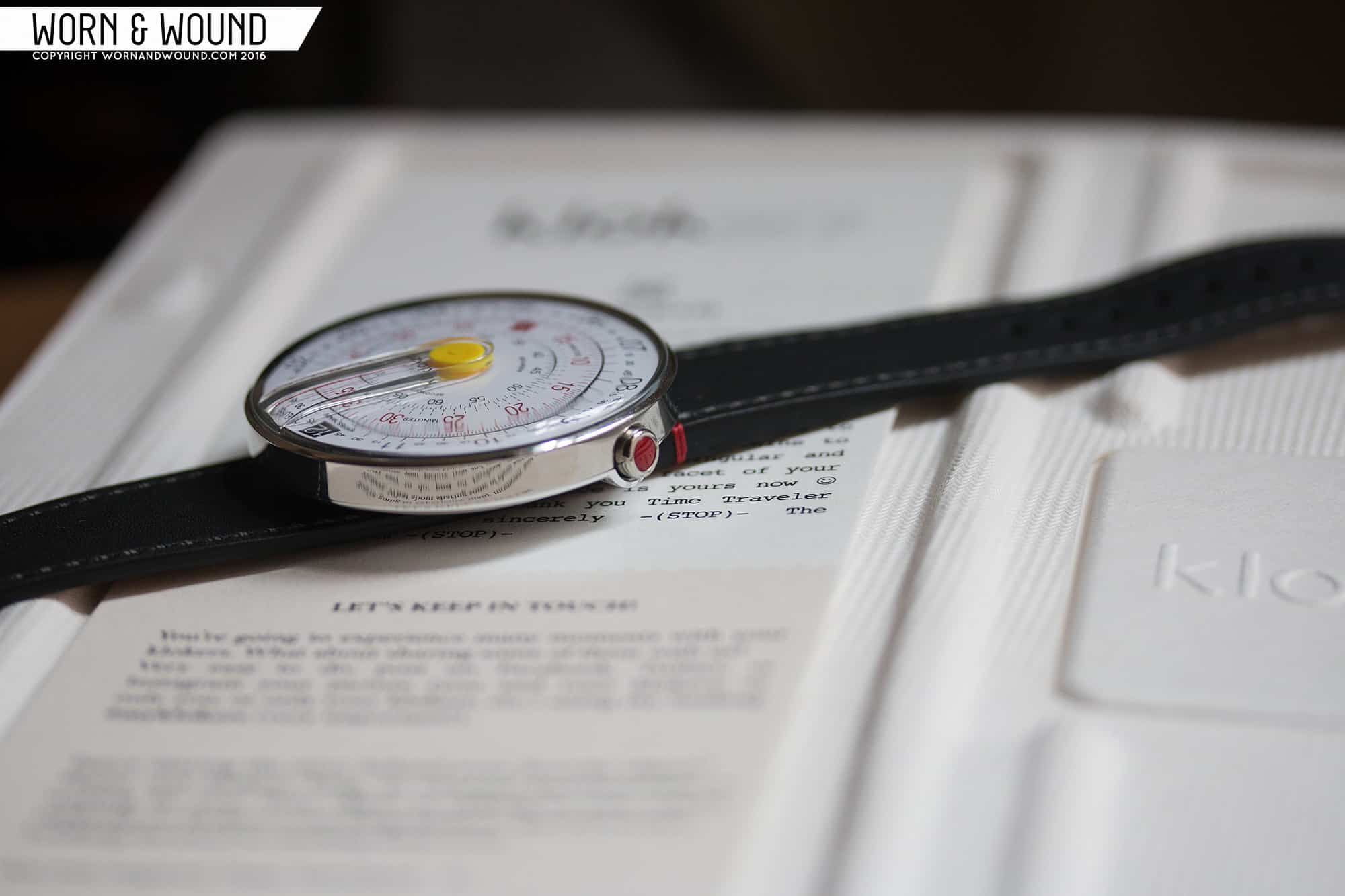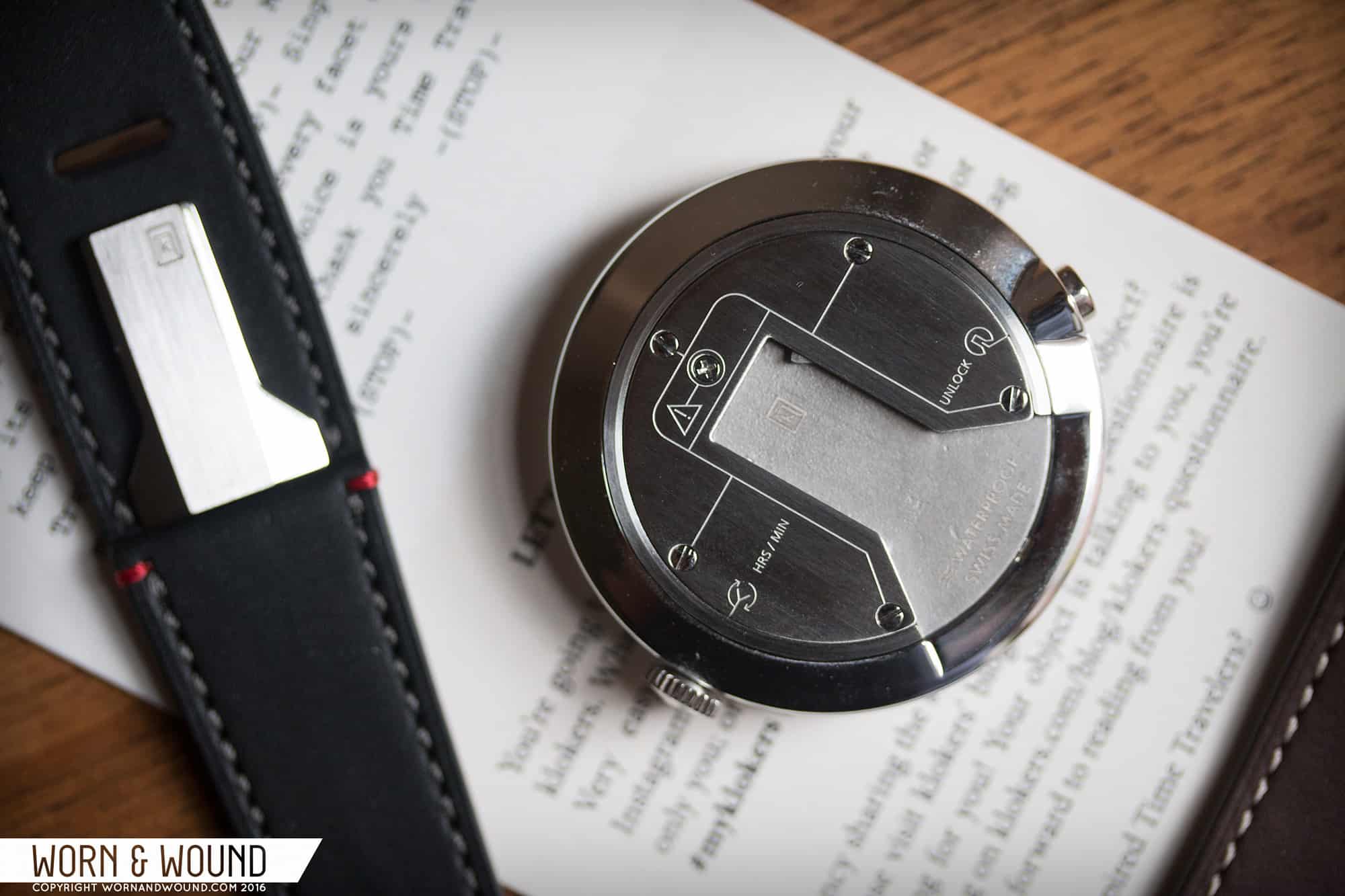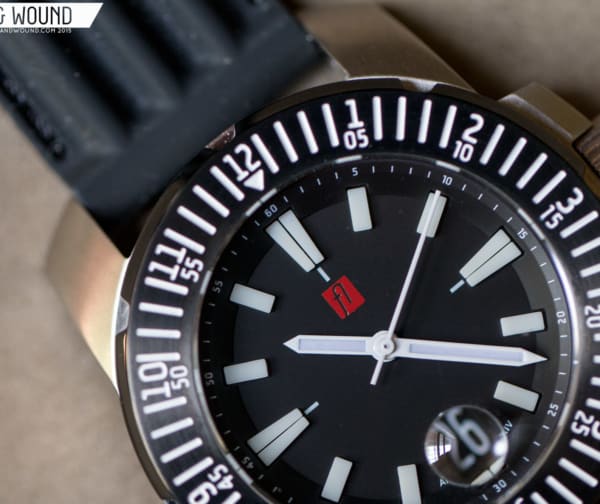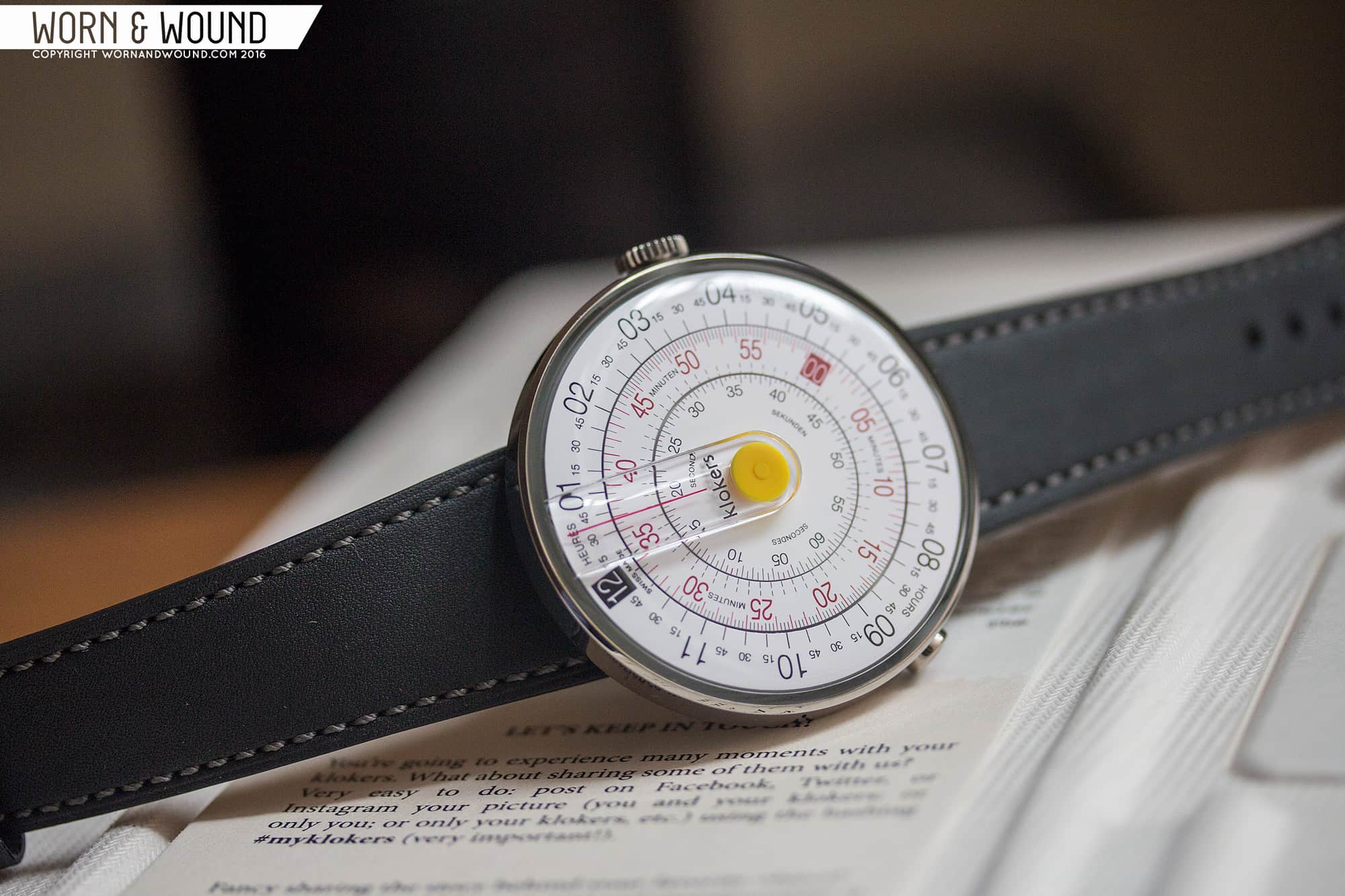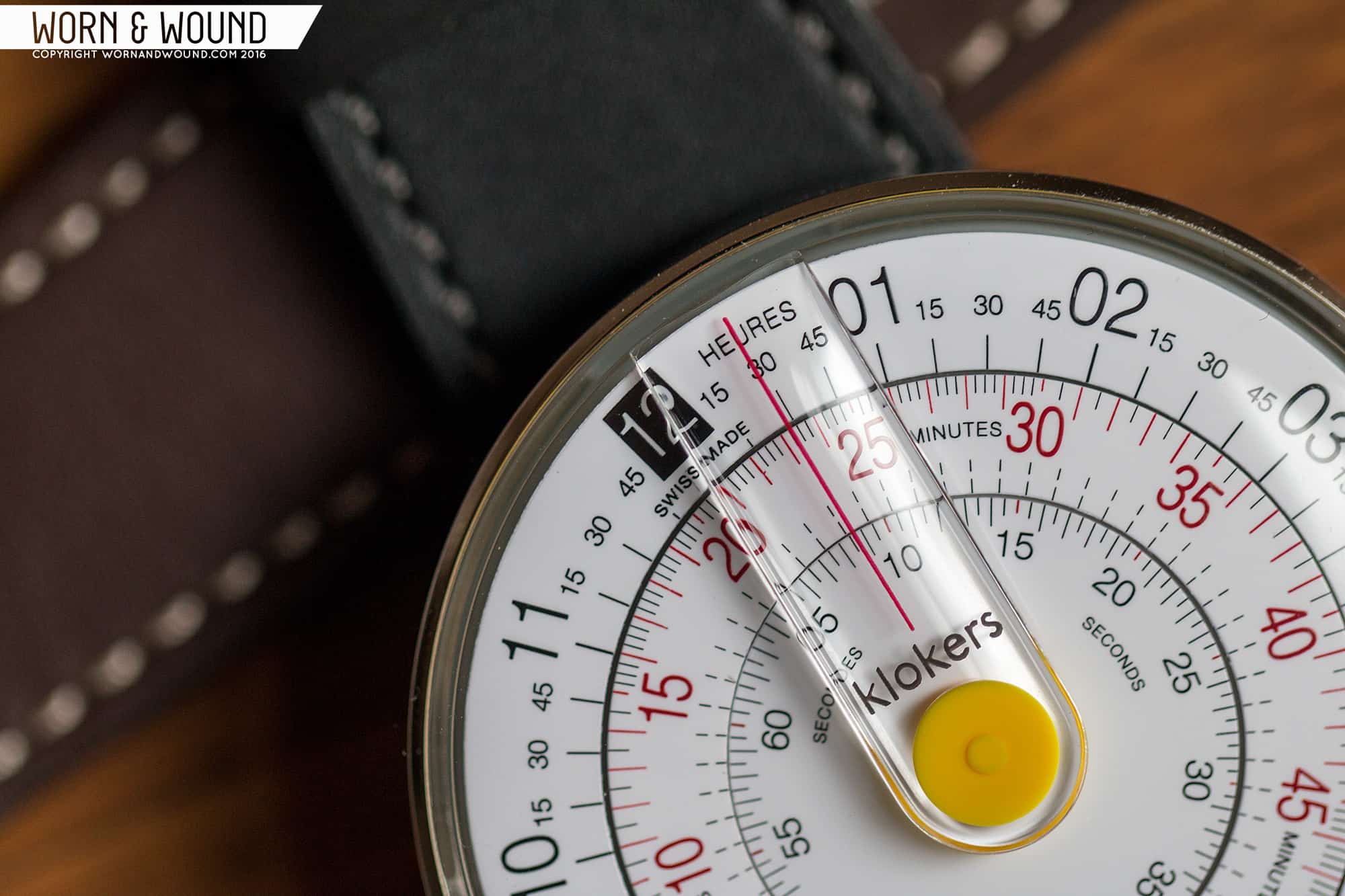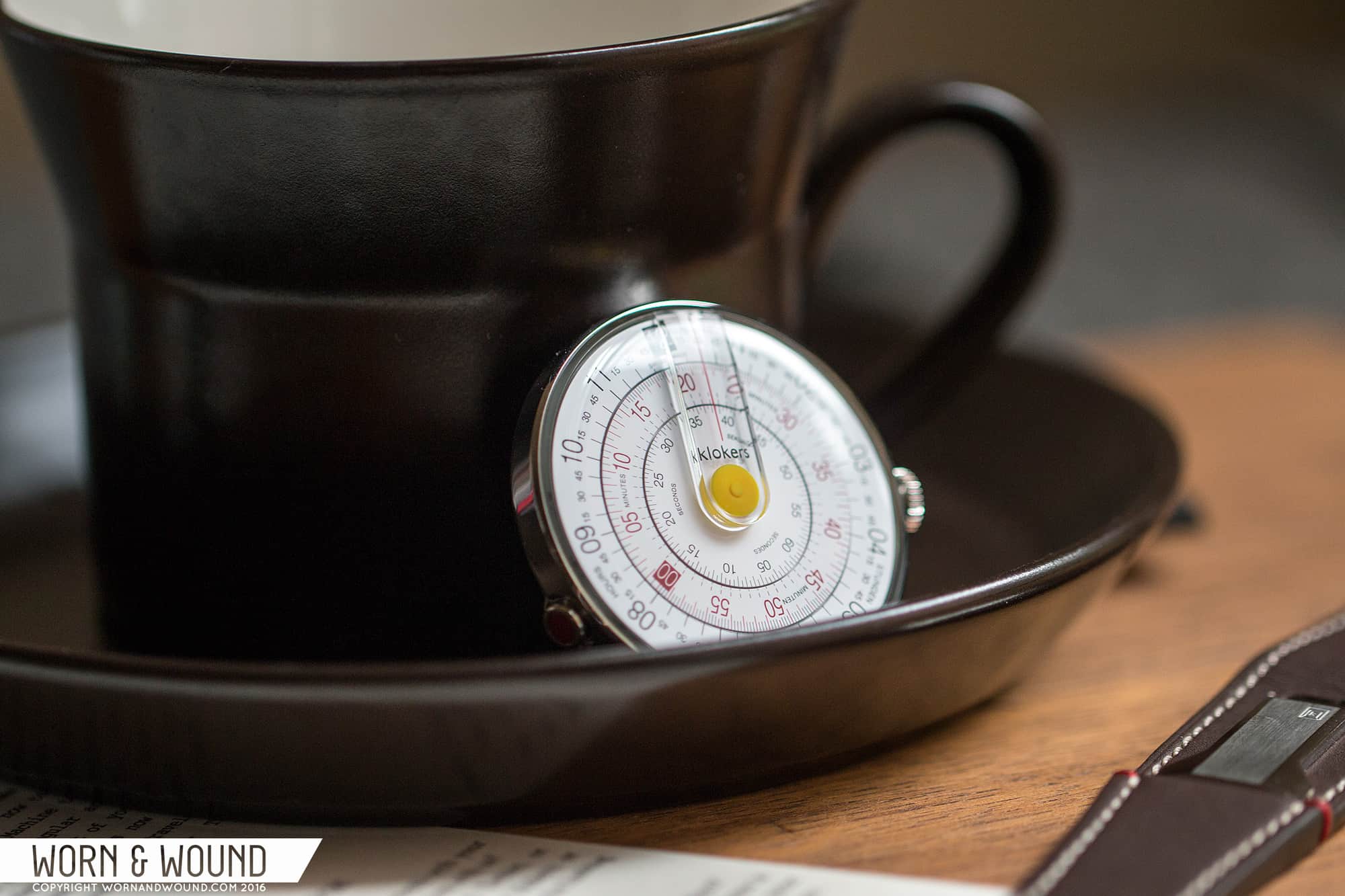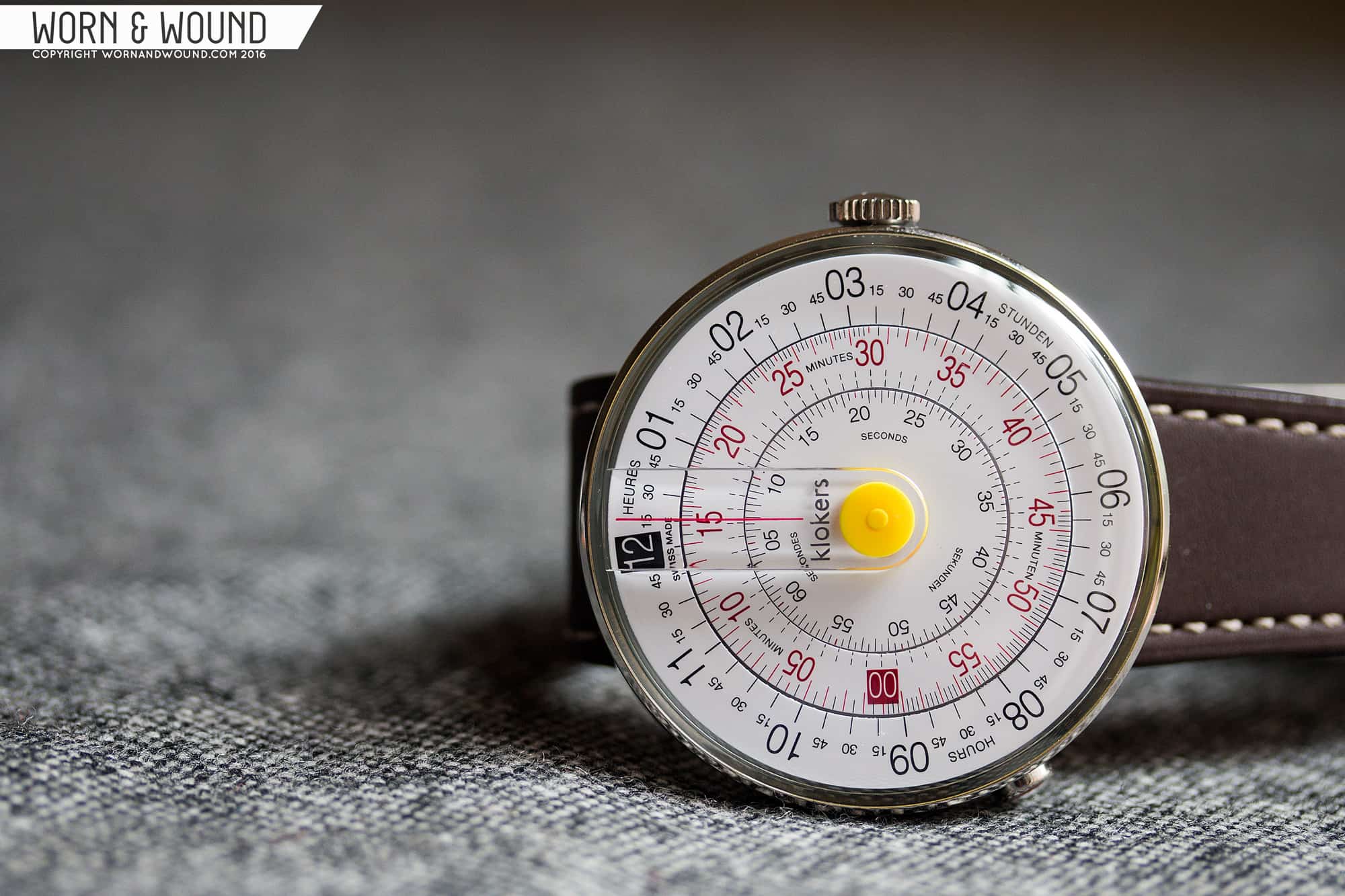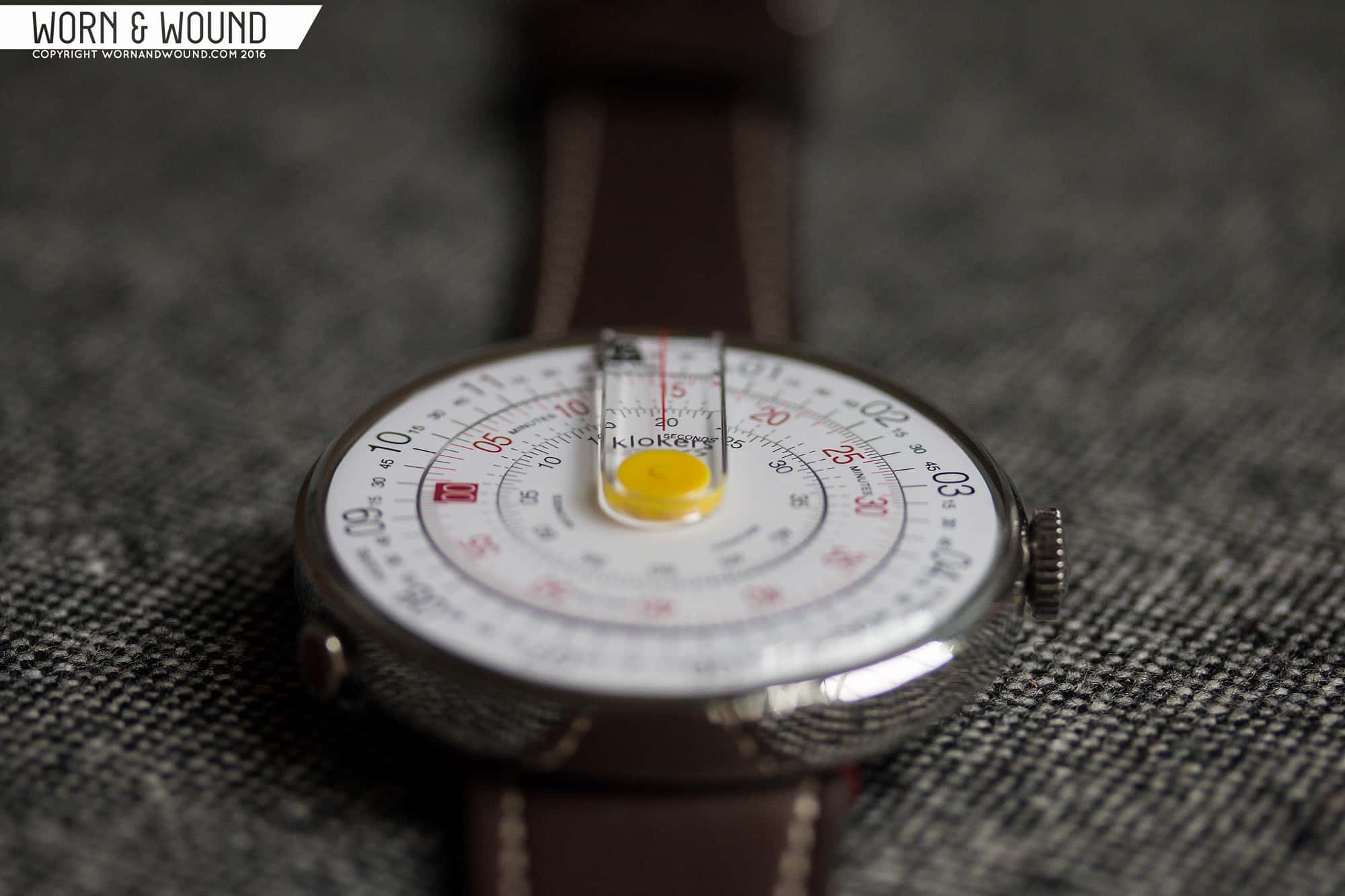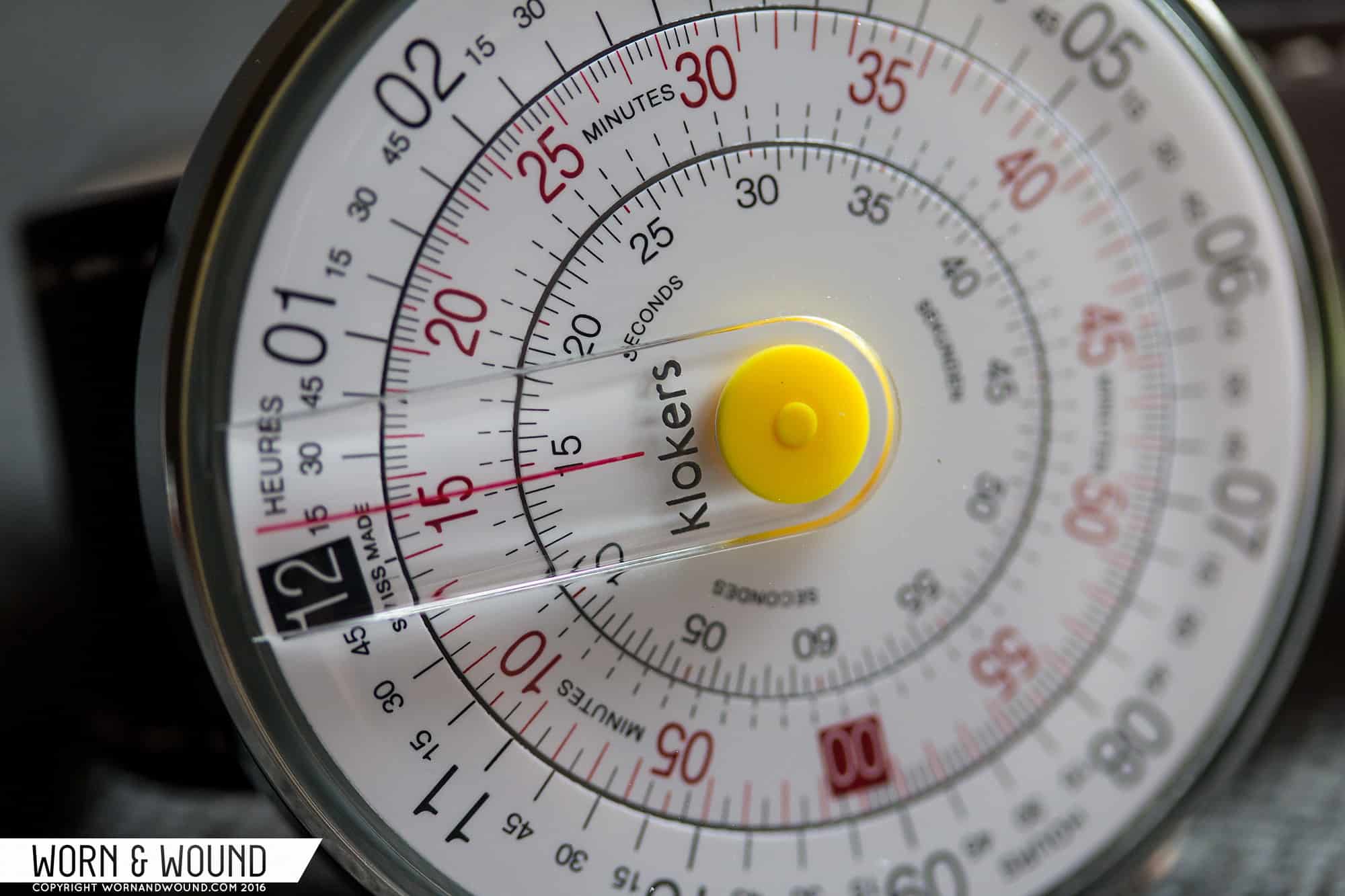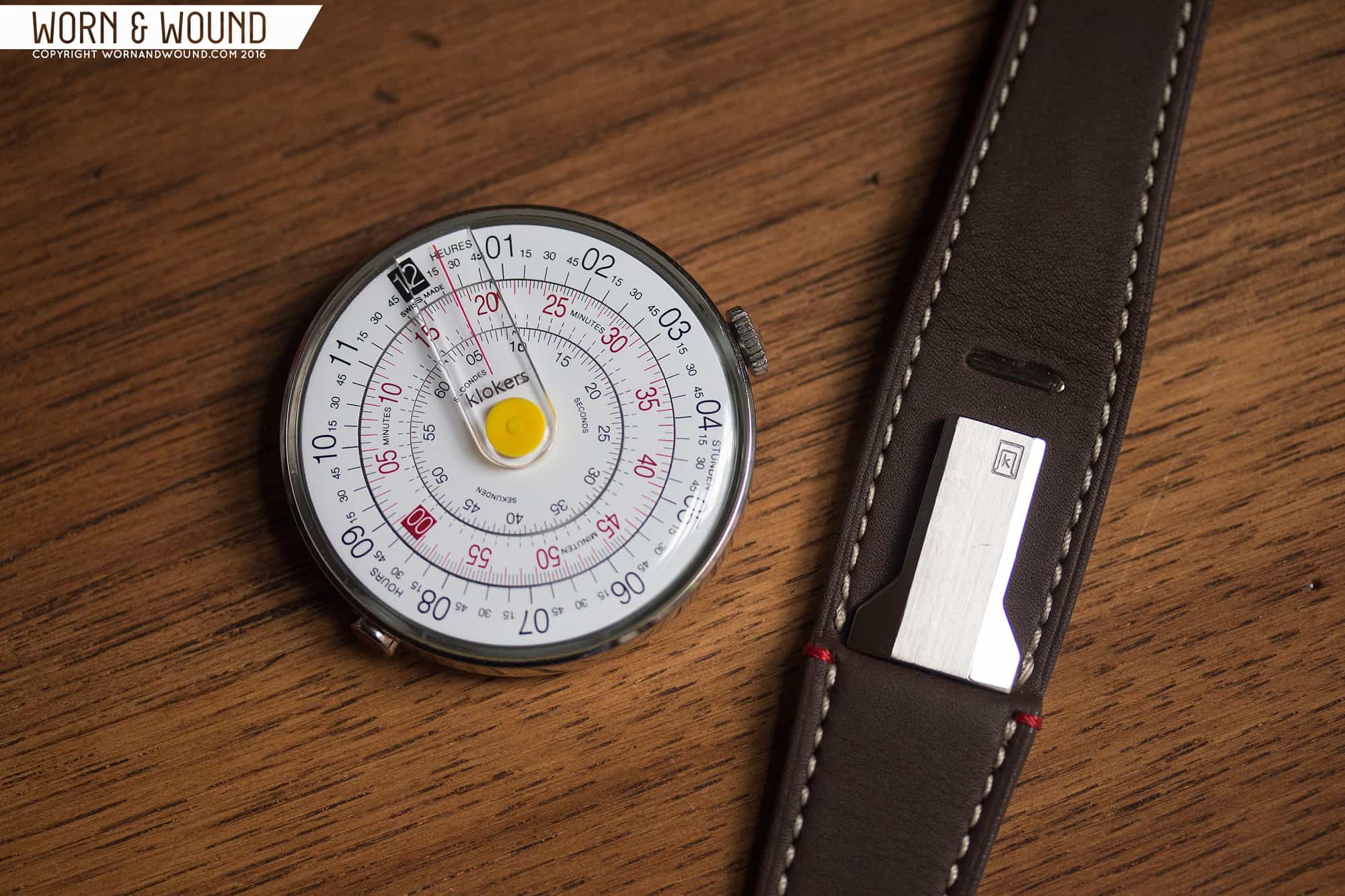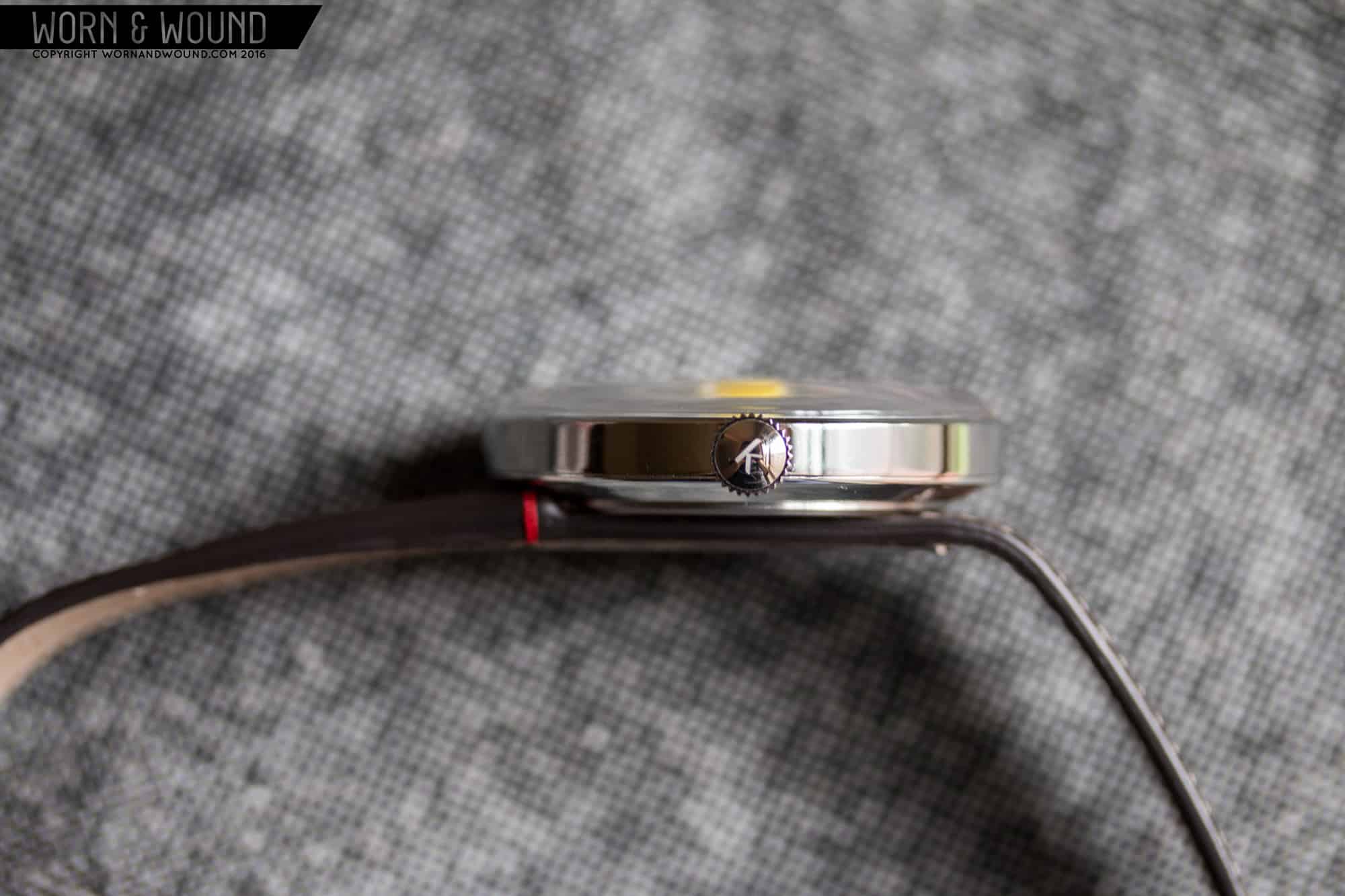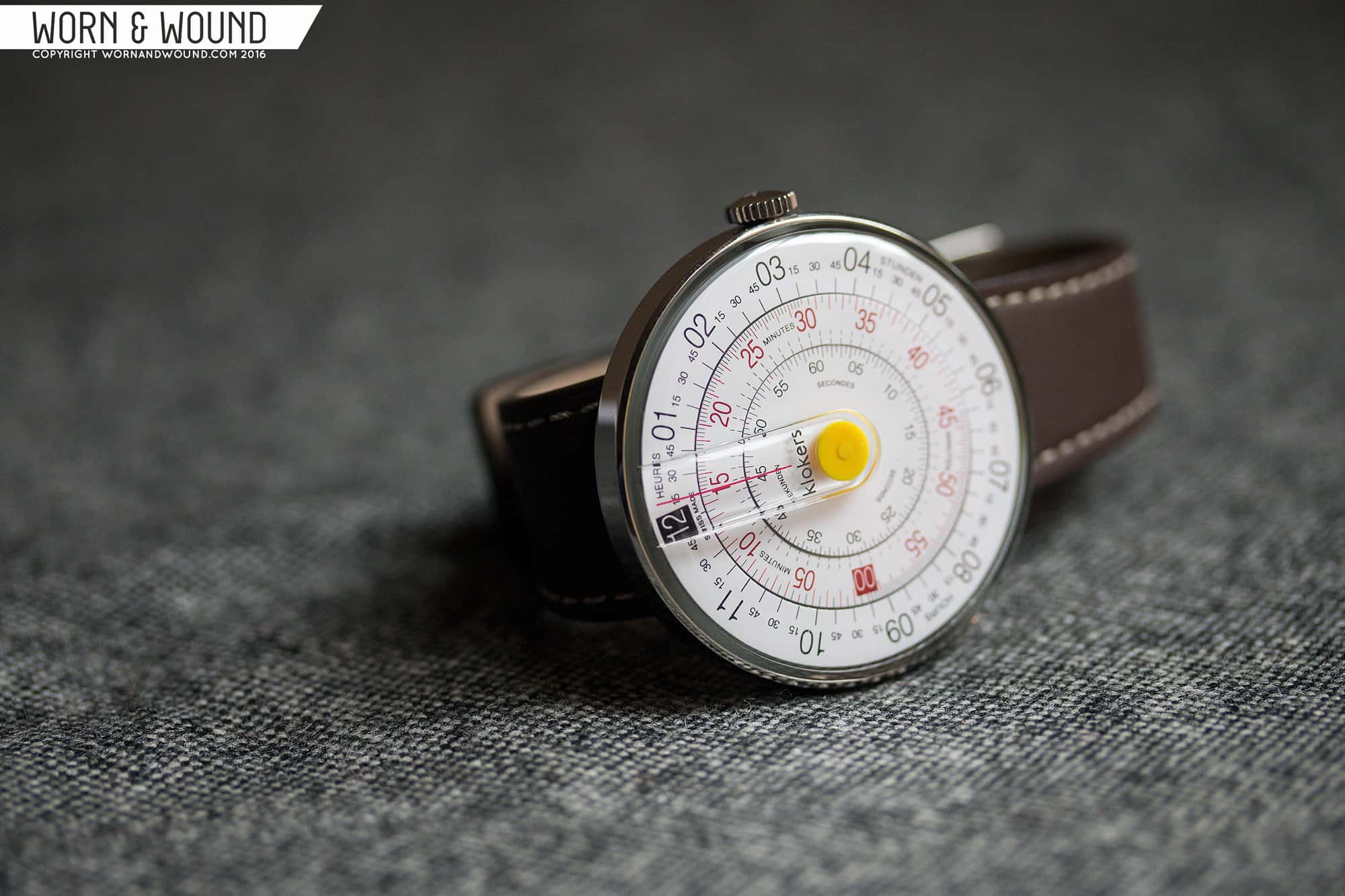Last August (2015) we introduced you to Klokers, a new line of Swiss-made watches that were about to launch on kickstarter. Through their campaign, they raised 605,000 euros off of a 50k goal, making their project a huge success. The campaign actually consisted of two different watches built off of the same modular platform, the Klok-01 and the Klok-02. The first was a disk watch based on circular slide rules that used a unique Ronda quartz movement to rotate the disks counter-clockwise (more on that later). The second was a more ambitious timepiece with a unique world-timer display and retrograde minutes, based off of the Soprod Mecatronic movement.
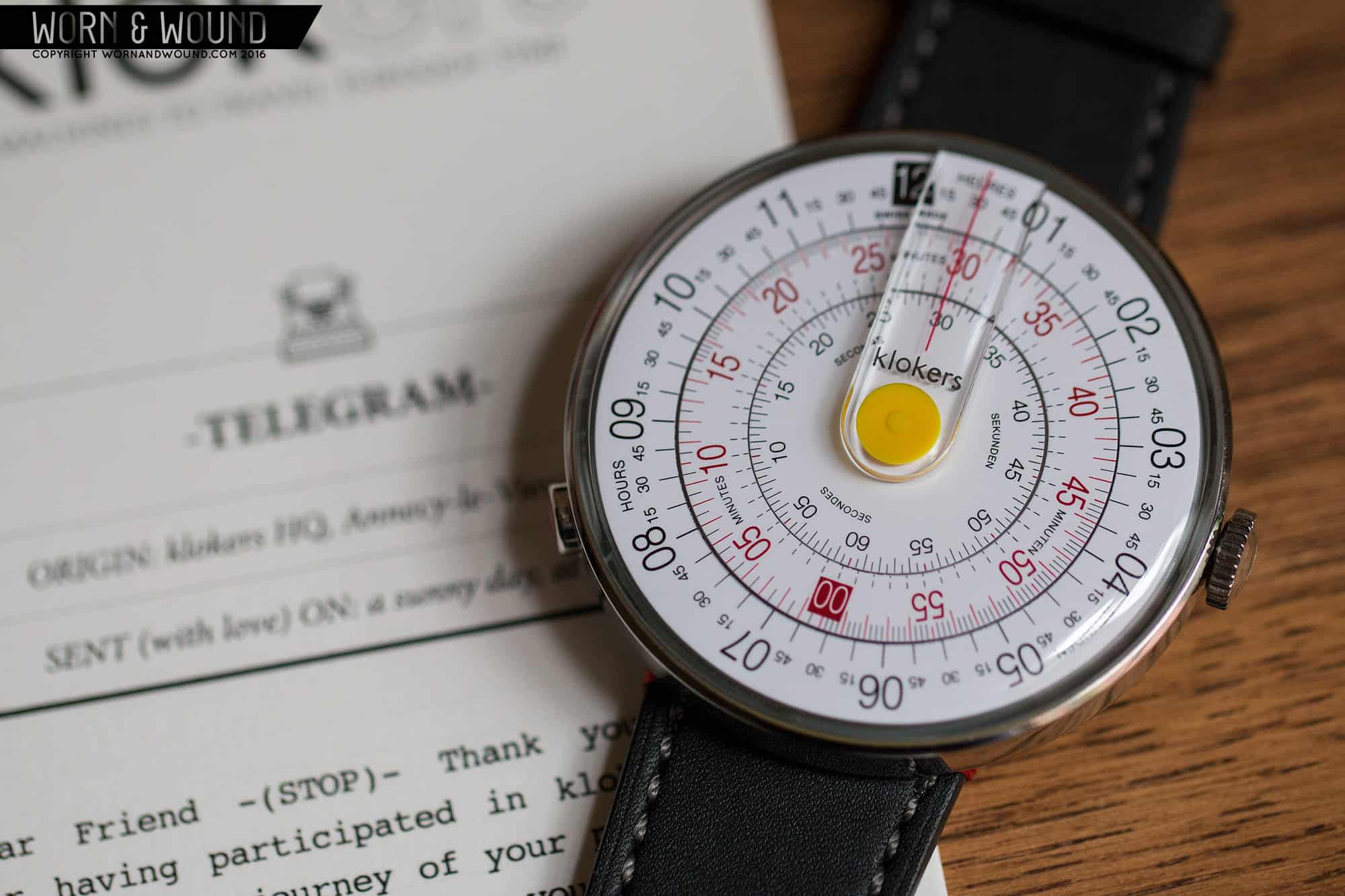
Today, I’m excited to go hands-on with the Klok-01. This watch really caught my eye last summer, as it had an aesthetic that we don’t often come across. A bit technical, a bit playful, it rode the line between a design/art watch and something more instrument based. As I said in my previous article, disk watches are not a new concept, but through good design and execution, this one stood out. By drawing inspiration from circular slide rules, a detail most notably seen in the crystal, the disk concept feels less novel, more serious. Add in various other details such as the movement and modular strap system, and the watch becomes a very unique piece.









 Featured Videos
Featured Videos





